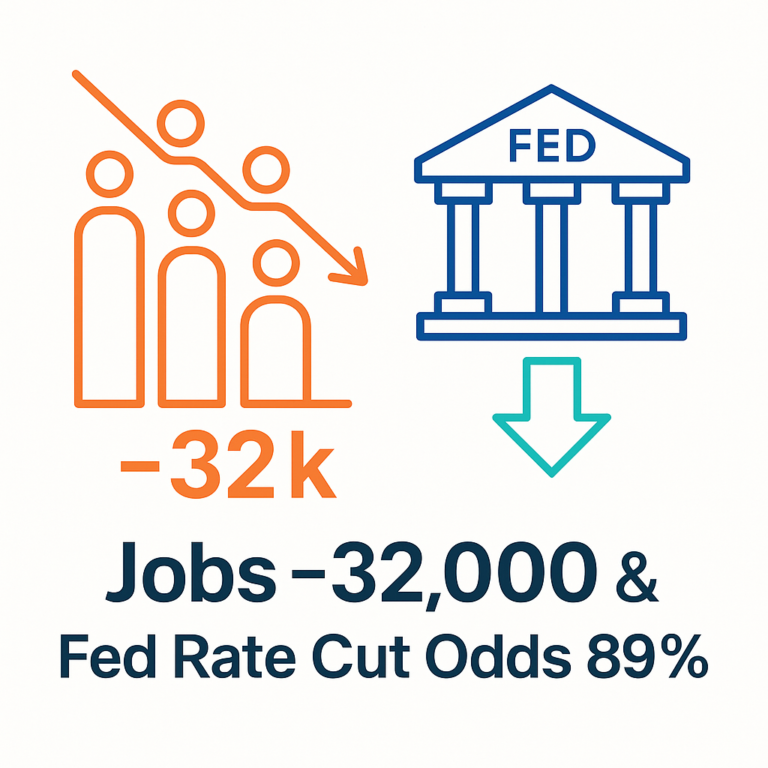Single Stock Concentration Risk: How to Avoid Overweight Positions and Protect Your Portfolio
Learn how to manage single stock concentration risk in 2025. Discover concentrated portfolio risk solutions, rebalancing strategies, and how to avoid overweight positions.
Key Takeaways
• Single stock concentration risk emerges when one stock exceeds 10–20% of your portfolio.
• The “Magnificent Seven” now account for 34% of the S&P 500, creating hidden risks.
• Experts recommend keeping overweight positions in one stock below 5–10%.
• The best concentrated portfolio risk solutions include rebalancing, ETFs, and diversification.
In 2025, single stock concentration risk is one of the most critical issues facing investors. With tech giants like Nvidia, Apple, and Tesla dominating market gains, many portfolios are now overexposed. The so-called Magnificent Seven represent 34% of the S&P 500, showing just how concentrated the market has become (MarketWatch).
While holding an overweight position in one stock can deliver impressive short-term gains, long-term wealth preservation requires balance. This article explores why stock concentration happens, the risks involved, and practical portfolio rebalancing strategies to regain control.
Why Investors Face Single Stock Concentration Risk
There are many reasons why investors end up with an overweight position in one stock. Rapid price growth in companies like Nvidia or Tesla creates fear of missing out, leading investors to hold beyond rational levels.
Workplace equity compensation plans (RSUs, ESPPs) often leave employees with high exposure to employer stock. Inheritances and family wealth transfers also cause unintentional concentration.
Financial advisors generally caution that once a stock exceeds 10–20% of portfolio value, the investor faces single stock concentration risk that requires action.
Data Proves Concentration is Rising
Data shows the danger clearly. The top seven U.S. tech stocks now account for 34% of the S&P 500, a level unseen in modern history (MarketWatch).
This level of dependency creates vulnerabilities. Even small shocks—earnings misses, new regulations, or sector downturns—can hit an investor’s wealth disproportionately. Once exposure passes 20%, risk rises exponentially.
Single Stock Exposure and Risk
|
Exposure Level |
Risk Assessment |
Notes |
|---|---|---|
|
≤10% |
Stable |
Healthy diversification |
|
10–20% |
Caution |
Early signs of concentration |
|
20%+ |
High risk |
Serious threat to portfolio stability |
Expert Warnings on Overweight Positions in One Stock
Kiplinger advises keeping employer stock below 5–10% of assets. Overweight positions put both your paycheck and portfolio at risk.
T. Rowe Price warns that retirees with single stock concentration risk could jeopardize their financial independence.
The Financial Times highlighted real cases where investors discovered, through a portfolio X-ray, that one stock exceeded 10%—a clear red flag demanding a portfolio rebalancing strategy.
The Risks of Concentrated Portfolios
Concentrated portfolios carry specific risks:
- Volatility amplification: A single company’s news can swing total net worth.
- Employment + wealth overlap: If employer stock dominates, both job stability and portfolio returns are tied to one firm.
- Weaker long-term returns: While concentrated bets may outperform in the short run, diversified strategies usually win over decades (Raymond James).
Concentrated Portfolio Risk Solutions
Investors can reduce single stock concentration risk through several proven strategies:
- Regular portfolio rebalancing: Trim positions annually or when a stock exceeds 20% of your holdings.
- ETF diversification: Use broad-market ETFs like VTI, VOO, and QQQ to spread risk.
- Bonds and alternatives: Balance growth with stability by adding fixed income or alternatives.
- Tax-aware selling: Plan exits carefully to manage capital gains taxes.
- Avoid emotional attachment: Focus on risk, not loyalty. Even top performers can underdeliver.
These concentrated portfolio risk solutions protect against drawdowns and improve long-term outcomes.
Portfolios with more than 20% in one stock face heightened risks that can derail long-term goals. Experts recommend limiting exposure to 5–10%, and adopting disciplined portfolio rebalancing strategies to avoid costly mistakes.
Check your portfolio today. If you’re holding an overweight position in one stock, now is the time to act with proven diversification methods.
References
- MarketWatch – Why your 401(k) may be breaking the first rule of investing
- Kiplinger – Why you shouldn’t have all your money in your company’s stock
- T. Rowe Price – Actions you can take if your portfolio is too concentrated
- Financial Times – Portfolio concentration and X-ray analysis
- Raymond James – Concentrated equity risk: Is it time to break your concentration?







